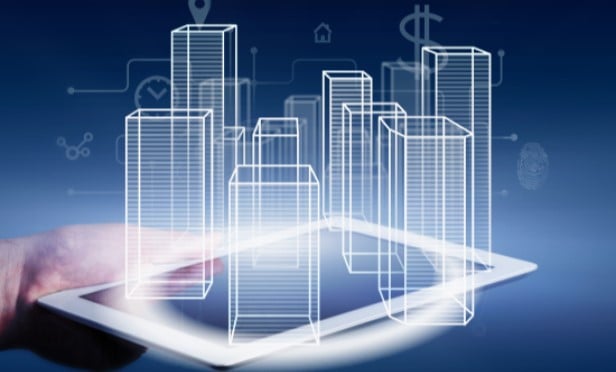Beacons and sensors are making it easier for business owners to improve space utilization, tighten security, lower operating expenses, efficiently track inventory, and enhance customers' experiences.
A new report from the NAIOP Research Foundation offers insight into some of the ways that simple, tiny, and affordable sensors are being used in the commercial real estate industry.
Beacons and sensors are digital sensing devices that make use of radio-frequency identification (RFID) tags, Wi-Fi and smartphones. Beacons typically “push” information to a mobile device within a certain geographic area — e.g., a notification appears on your smartphone that the store you are passing is having a sale — while sensors “pull” information from the environment, such as room temperature, motion, lighting levels, explains Jennifer LeFurgy, Vice President for Knowledge and Research, NAIOP.
In commercial real estate, beacons and sensors have typically been used for single purposes such as motion sensors turning on lights in a conference room or to share and store data. Now, though, these technologies are being linked through internet-based networks that become virtual ecosystems.
A virtual ecosystem, as it applies to beacon and sensor technology, is a set of devices that can be connected to the internet, can communicate with each other and interact with aspects of their environments. Although they may measure or control different things, they are typically networked together, therefore they can provide a comprehensive picture of their surroundings, LeFurgy tells GlobeSt.com.
This integration will connect an estimated 20.4 billion “smart” technologies by 2020, according to Gartner, Inc., and can provide in-depth information about a business or property including information on people counts, energy consumption and the movement of goods and temperature.
According to the report, real-world examples of how these technologies are used within commercial real estate include the below-mentioned scenarios.
• Attaching RFID tags to hardhats or badges at construction sites to track the workforce as they come and go plus categorizing vital information including the number of on-site workers, individuals who have specialized training or certifications, and employee demographics. • WeWork's use of beacons to track movements through its shared office facilities, including a smart phone push notice when someone enters a conference room notifying them if the room has been reserved by someone else and, if so, which other rooms are available. • JLL's PinPoint, which is used to monitor shoppers within a geofence at shopping centers the company manages or leases. The data collected by the geofence interface provides foot traffic data as well as quantifiable examples of consumer behavior that helps mall owners create new leasing strategies tailored to shopper preferences.
Costs for these strategies can vary widely. “RFID sensors are very affordable, costing from 10 cents to $50. Most beacons and sensors are also relatively inexpensive and can be purchased for under $100 each. Geofencing on the other hand can be expensive to implement, depending on the platform and numbers of ads targeted to customers,” explains LeFurgy.
As 2018 ends, building owners and operators are making use of sensors to measure the effectiveness of building management systems and utility usage. This will increase in the future but also there will be more interest in using sensors to “measure foot traffic, parking usage, workspace utilization, improve security and provide data on the ideal placement of amenities within a building,” says LeFurgy.
© 2025 ALM Global, LLC, All Rights Reserved. Request academic re-use from www.copyright.com. All other uses, submit a request to [email protected]. For more information visit Asset & Logo Licensing.








